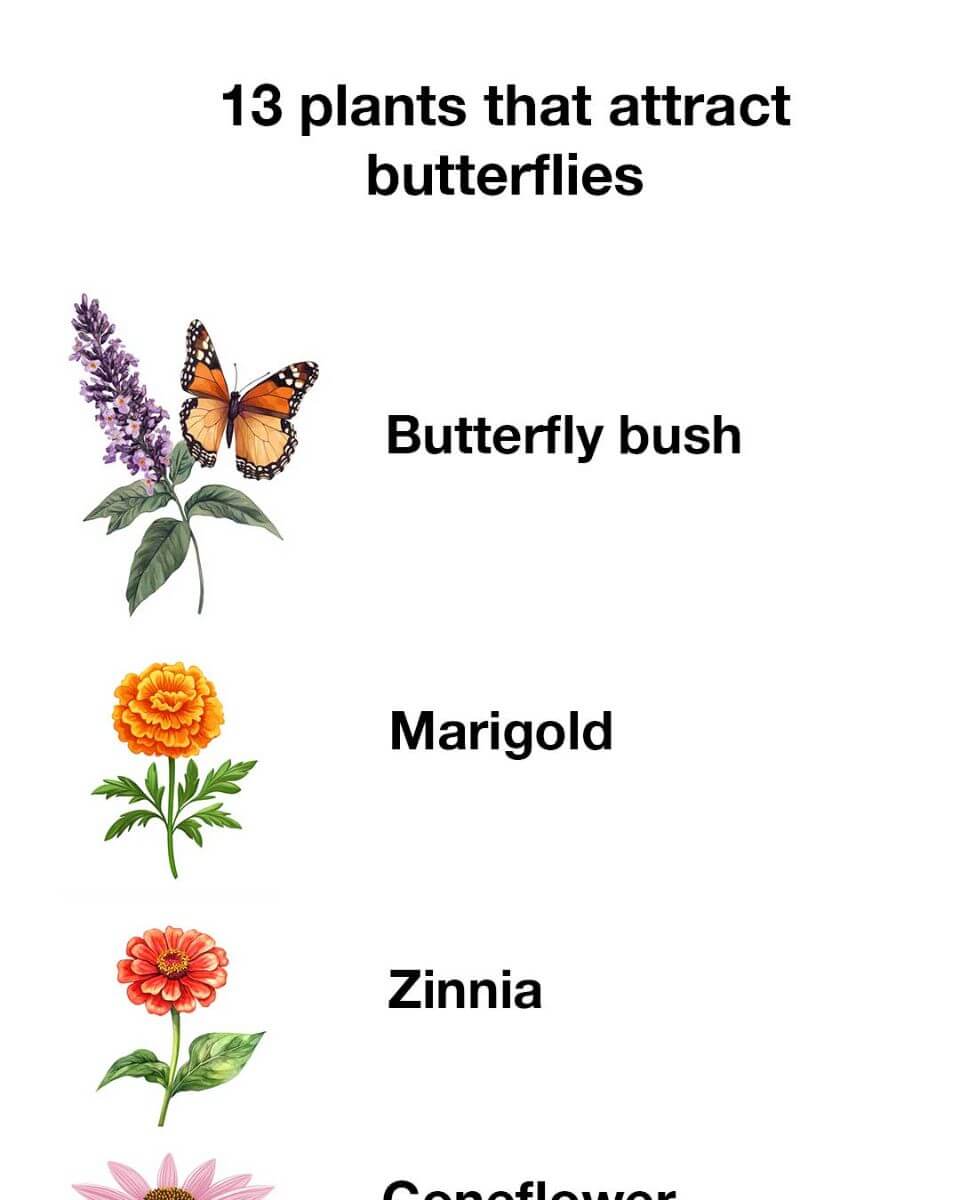Creating a butterfly-friendly garden is a wonderful way to bring life and color to your outdoor space. These gardens are designed to attract butterflies by offering them food, shelter, and breeding spots. By choosing the right plants, you can provide a welcoming environment for these delicate creatures, ensuring their presence throughout the growing season. In addition to beautifying your yard, butterfly gardens also play a role in conserving butterfly populations, many of which are threatened due to habitat loss.
Why Butterflies Are Important
Butterflies contribute significantly to ecosystems as pollinators, assisting in the reproduction of flowering plants by transferring pollen. This process promotes plant diversity and aids in food production. Encouraging butterflies in your garden helps sustain biodiversity and ecological balance. Moreover, their presence often signals a healthy environment that supports a variety of wildlife.
How Plants Attract Butterflies
Butterflies are drawn to plants primarily through their flowers, which provide nectar—a crucial food source for adult butterflies. Factors like flower color, shape, and fragrance influence a butterfly’s preference. Vibrant colors such as red, yellow, and purple are especially appealing to them. Additionally, some plants serve as host plants, offering a place for butterflies to lay eggs and for caterpillars to feed and grow.
13 Butterfly-Attracting Plants
-
Butterfly Bush: A Nectar Powerhouse
The butterfly bush (Buddleja davidii) is famous for attracting butterflies with its long, fragrant flower clusters. Blooming from summer to fall, it provides a steady nectar source. Available in colors like purple, pink, white, and yellow, it thrives in full sun and well-drained soil, making it an excellent garden choice. -
Marigold: Bright and Inviting
Marigolds (Tagetes spp.) are known for their vibrant orange, yellow, and red blooms. These low-maintenance annuals attract butterflies while also repelling certain garden pests, making them both functional and beautiful in a butterfly garden. -
Coneflower: A Perennial Favorite
Coneflowers (Echinacea spp.) are sturdy perennials with daisy-like blooms and prominent centers that serve as ideal landing platforms for butterflies. Blooming from midsummer to fall, they come in shades of purple, pink, and white. They are drought-tolerant and thrive in full sun. -
Zinnia: A Colorful Nectar Source
Zinnias (Zinnia elegans) provide butterflies with easy access to nectar. Their bold colors—ranging from red and orange to pink and purple—ensure a lively garden. Blooming from summer to fall, zinnias are simple to grow and thrive in sunny spots. -
Milkweed: Essential for Monarchs
Milkweed (Asclepias spp.) is crucial for monarch butterflies as a host plant. Monarch caterpillars rely on milkweed for nourishment, while the plant’s flowers provide nectar for adult butterflies. Species such as common milkweed, swamp milkweed, and butterfly weed each cater to different environments. -
Lantana: A Cluster of Attraction
Lantana (Lantana camara) is a tropical plant with small, clustered flowers that change color as they mature. It thrives in warm, sunny conditions and is highly drought-tolerant. With a long blooming period from spring through fall, it offers an extended nectar supply. -
Aster: Late-Season Bloomer
Asters (Symphyotrichum spp.) bloom in late summer and fall, providing nectar when other flowers fade. Their star-shaped flowers come in hues of purple, blue, pink, and white. Asters prefer full sun to partial shade and well-drained soil. -
Verbena: Prolonged Blooms and Nectar
Verbena (Verbena spp.) produces small, tubular flowers in an array of colors. It blooms from spring through fall, ensuring continuous nectar availability. This drought-tolerant plant thrives in full sun and suits borders, containers, and ground covers. -
Lavender: Fragrant and Beneficial
Lavender (Lavandula spp.) attracts butterflies with its fragrant, purple flower spikes. Thriving in full sun and well-drained soil, it is drought-resistant and enhances gardens with both nectar and a soothing aroma. -
Phlox: Sweetly Scented Blooms
Phlox (Phlox spp.) is a perennial with clusters of sweet-smelling flowers that butterflies love. Available in pink, white, red, and purple, it blooms from spring to summer and grows well in sun to partial shade with moist, well-drained soil. -
Salvia: A Butterfly Favorite
Salvia (Salvia spp.) includes various species, both annual and perennial, with tubular flowers rich in nectar. With shades of blue, purple, red, and pink, salvia attracts numerous butterfly species and thrives in sunny, well-drained conditions. -
Joe-Pye Weed: A Tall, Showy Option
Joe-Pye weed (Eutrochium spp.) is a towering perennial with clusters of pink or purple flowers that bloom in late summer and fall. It thrives in moist soil and full to partial sun, making it an excellent addition to butterfly gardens. -
Black-Eyed Susan: A Classic Wildflower
Black-eyed Susans (Rudbeckia hirta) are iconic wildflowers with bright yellow petals and dark centers. These perennials bloom from summer to fall and provide a reliable nectar source for butterflies. They flourish in full sun and well-drained soil.
Tips for Designing a Butterfly-Friendly Garden
- Choose a mix of nectar-rich plants and host plants for caterpillars.
- Plant in clusters to make it easier for butterflies to locate flowers.
- Ensure the garden is in a sunny, sheltered location since butterflies need warmth.
- Include flat stones or surfaces where butterflies can bask in the sun.
- Avoid pesticides, as they can be harmful to butterflies and other pollinators.
- Provide a shallow water source, like a birdbath with stones, for perching and hydration.
Conclusion: Creating a Haven for Butterflies
Planting a variety of butterfly-attracting flowers ensures a vibrant, lively garden that supports these essential pollinators. Observing butterflies flutter from flower to flower fosters a deeper connection with nature. Beyond adding beauty, butterfly gardens contribute to conservation efforts, helping sustain butterfly populations. With a little planning, you can enjoy the mesmerizing presence of butterflies in your garden for years to come.
